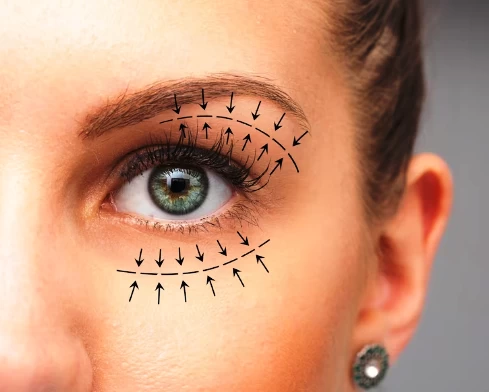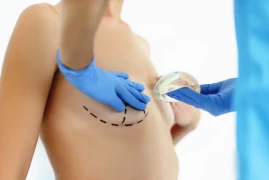
Eyelid Surgery for Youthfulness and Vitality: Blepharoplasty
- Eyelid Surgery for Youthfulness and Vitality: Blepharoplasty
- What Is Eyelid Surgery?
- Who Is Eyelid Surgery Suitable For?
- How Does Eyelid Surgery Work?
- Are There Risks Associated with Eyelid Surgery?
- What Are the Benefits of Eyelid Surgery?
Eyelid surgery (Blepharoplasty) is a popular cosmetic surgical option for many individuals who want to mitigate the effects of the aging process, address aesthetic concerns, or resolve issues in the eye area. Since the eyes are one of the most prominent and attention-grabbing areas of the face, improvements in this area can significantly impact a person's overall appearance. In this article, we will explore what eyelid surgery is, who it is suitable for, how the procedure is performed, and the potential risks and benefits involved.
What Is Eyelid Surgery?
Eyelid surgery involves the surgical procedure of reshaping the skin, muscle, and fat tissues in the upper and lower eyelids. There are essentially two types:
- Upper Eyelid Surgery: In this procedure, excess skin and fat tissue in the upper eyelids are removed, and the eyelid is reshaped. This procedure is aimed at individuals who want to make their eyes look younger and more vibrant due to eyelid drooping (ptosis) or signs of aging.
- Lower Eyelid Surgery: Lower eyelid surgery is used to correct puffiness, bagginess, and fine wrinkles in the lower eyelids. Fat deposits in the lower eyelids are removed or repositioned, and the skin is tightened.
Who Is Eyelid Surgery Suitable For?
Eyelid surgery may be suitable for individuals experiencing the following conditions:
- Those with significant sagging or drooping of the eyelids due to structural or genetic reasons.
- Individuals with puffiness or bagginess in the lower eyelids.
- Those with wrinkles around the eyes.
- Individuals looking to enhance their aesthetic appearance.
- Those experiencing a loss of elasticity due to aging or significant weight fluctuations.
However, it may not be the right option for everyone. A plastic surgeon should evaluate a person's health and expectations and determine the suitability of the procedure.

How Does Eyelid Surgery Work?
Eyelid surgery is a surgical procedure performed to enhance the appearance of the upper and lower eyelids. The process of this procedure is detailed below:
- Consultation and Evaluation: The first step is to have a consultation with a plastic surgeon. During this meeting, the doctor assesses the patient's expectations and medical history. Eyelid surgery is tailored to the individual's age, skin type, health condition, and aesthetic goals. The surgeon determines which type of eyelid surgery (upper, lower, or both) is required.
- Preparation: The surgeon provides detailed pre-operative instructions. These may include refraining from smoking, discontinuing certain medications, and adhering to fasting requirements. On the day of the surgery, the patient dresses appropriately for the operating room conditions and prepares for anesthesia.
- Anesthesia: Eyelid surgery is typically performed under local anesthesia or general anesthesia. Depending on the preferences of the surgeon and the patient, the patient can be awake or sedated. General anesthesia involves the patient being asleep during the operation, while local anesthesia numbs only the surgical area.
- Incisions: The surgeon makes thin, inconspicuous incisions in specific locations. These incisions eventually become nearly invisible. For upper eyelid surgery, the incision is typically made within or above the natural eyelid creases, while for lower eyelid surgery, it can be along the lower lash line or just below it. In cases where only fat protrusion is the issue (especially in young patients), the incision can be placed on the inside of the lower eyelid (transconjunctival approach). This allows for the removal or repositioning of fat without any visible external scars. If there is both fat prolapse, excess skin, and muscle laxity, the incision can be planned close to the lash line. This incision also becomes inconspicuous over time. In summary, the eyelid skin is one of the most advantageous areas in terms of scar formation.
- Removal or Adjustment of Excess Skin and Fat Tissue: Once the incisions are made, the surgeon begins to adjust excess skin, muscle, and fat tissue. For upper eyelid surgery, excess skin and fat are removed, while for lower eyelid surgery, fat deposits are adjusted or removed. This step may vary depending on the patient's aesthetic goals and anatomy. In upper eyelid surgery, a part of the fat tissue may be removed along with excess skin and muscle, but the fat should not be removed excessively, as it plays an important role in maintaining a youthful appearance. In lower eyelid surgery, trimming or reshaping of fat tissue and other necessary adjustments can be made according to the patient's needs.
- Skin Tightening and Suturing: After removing excess tissue, the skin is tightened, and incisions are closed with meticulously placed sutures. These sutures are fine and become nearly invisible or completely invisible over time.
- Recovery Period: After the surgery, the patient's eyes are typically covered with bandages or a special protective lens. This is done to protect the eyes and reduce swelling. Bruising and swelling may occur in the first few days. It is important to follow the doctor's recommended medications and care instructions during the recovery period. Special tapes are applied to both upper and lower eyelids after the operation, and the patient can be discharged on the same day or the next day. Swelling and bruising decrease and disappear in the first 1-2 weeks. During this process, it is important to protect the eyes from the sun and follow the doctor's medication recommendations.
- Achieving Results: The results of eyelid surgery typically become noticeable within a few weeks and improve as the healing process is completed. The results help individuals achieve a younger, fresher, and more vibrant appearance.
Are There Risks Associated with Eyelid Surgery?
Eyelid surgery is generally a procedure performed successfully. However, like any surgical procedure, it carries some risks, including infection, bleeding, healing issues, and anesthesia reactions.
What Are the Benefits of Eyelid Surgery?
- Achieving a youthful and refreshed appearance
- Making the eyes look larger and more open
- Reducing wrinkles around the eyes
In conclusion, eyelid surgery can be an effective option for those looking to address aging signs or aesthetic concerns. However, before any surgical procedure, it is important to have a comprehensive consultation with a plastic surgeon. Making the right decision under the guidance of a professional expert plays a critical role in achieving the desired results.






